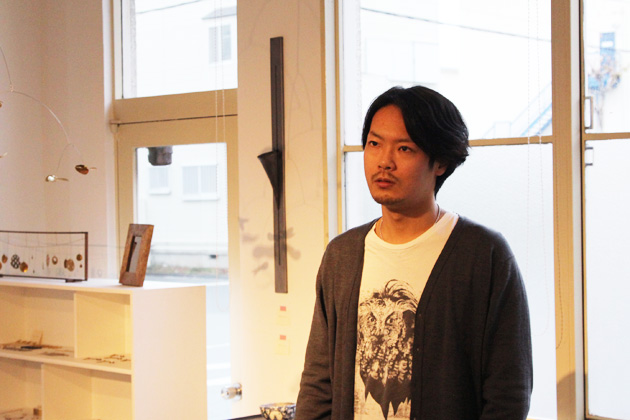
Interview with Architect Kunihiko Matsuba
The up-and-coming architect, Kunihiko Matsuba. For his first work, Hirozakari Sake Brewery (Nakanojo-machi, Gunma Prefecture), since becoming independent he has received such prizes as the 11th Yoshinobu Ashihara Award:Merit Award (Japan Association Of Artists Craftsman & Architect Award) and The International Architecture Awards 2012 (The Chicago Athenaeum) and is attracting interest both inside and outside of Japan.
Another piece of work is 18.43 Tamachi Renovation Project, involving the neighborhood revitalization of Hachioji, Tokyo (also where he is based) from a creative and artistic angle, which demonstrates how his activities are not just exclusive to architecture.
We had a look into his architectural goals and his efforts to improve his community.
What made you decide to become an architect?
Kunihiko Matsuba (Matsuba)I don’t remember but I sat an exam for an architectural course at university. I suppose I had wanted to be an architect back then but if you ask me the exact turning point, then I have no clue. Though I did hear that in a graduation piece at my elementary school, I had written that I wanted to become an architect. I also remember being told by a school teacher that his friend who was an architect earned a lot.
The road to becoming an architect is tough. You have to go to graduate school and then get a place at a famous architectural firm. In the beginning you’re treated like a slave, and to put it simply, I hated that idea. I first applied to Shiseido but was rejected. I thought it’s sickening for a student studying architecture to graduate and enter an architectural firm. I wanted to be different from others and for others to ask, “Why was he working at Shiseido?” I did toy with the idea of going down the advertising and graphic design route but that wasn’t meant to be, so I felt there wasn’t much for me to do except do architecture.
I was kind of drifting along when the Hidetsugu Aneha incident of forging quake-proof data arose and I thought it would be harder for me to qualify for a 1st class Kenchikushi (qualified architect and building engineer) license but when I took the exam a year later, I passed. A year later I founded my own company and it took 28 years for me to get to that point.
That’s the gist of it – it’s different from the usual way of a student working hard to gain experience, and I was just floating about.
You mentioned qualifying for the 1st class Kenchikushi license, but it’s not an easy qualification to obtain, is it
MatsubaI don’t know but I stopped my part time job three months before the exam and entered an exam-mode. I concentrated over a short span. I’m guessing a lot of the applicants applied while working. I imagined it would be tough if I were to do the same.
What are your thoughts on winning this year’s international architecture awards?
MatsubaThe reason I entered the piece was because young and upcoming architects one or two generations above me had been entering their work. When I looked at Makoto Tanijiri’s profile this award caught my eye and it was all down to wondering and finding out what it was all about. Having the word ‘international’ in the title sounded cool so I thought I might as well enter.
Please tell us a little about Hirozakari Sake Brewery.
MatsubaIt was to renovate an old brewery into a creative and cultural facility, and as one of the central locations for the Nakanojo Biennale event.
It was a small offer made by the community of Nakanojo in Gunma Prefecture. It’s a hot spring resort but compared to the capital, there’s not a lot there. In 2007, the mayor at that time started Nakanojo Biennale and one of the buildings they got their hands on as a venue was the Hirozakari sake brewery. It’s an extremely old building and using it in that state was a bad idea, so they called on me to help.
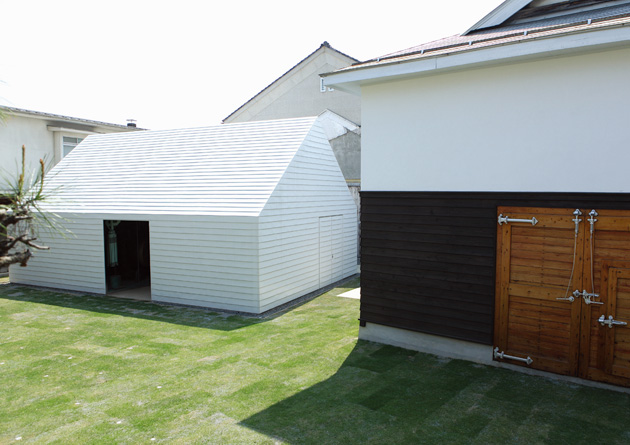
Photo by Tomoki Hirokawa
It looks like a fairly old building and we’re sure a lot of work had been put into it. What did you have in mind during the process?
MatsubaI’m not sure if I had it in mind when I started but the finished work was distorted. My colleague said it was because my personality is distorted. For instance, I put glass along the sides of the path (used to keep the taiko for the Folk Cultural Property tori-oi/bird-driving festival) and by using the reflected glare, made the external space internal and allowing the reflected glare of the external space to create a distortion. I also tried slanting the floors of the event space.
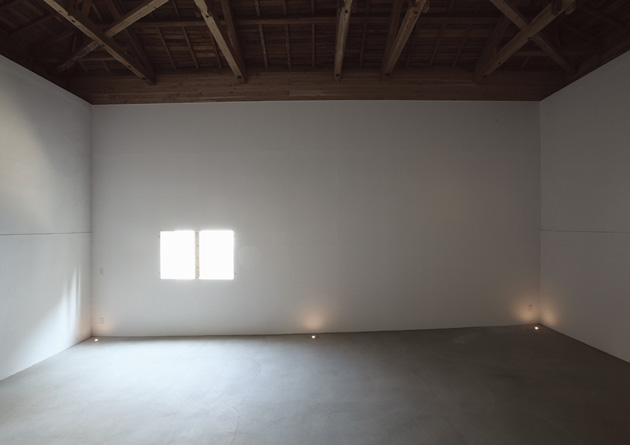
Photo by Tomoki Hirokawa
Why did you slant it?
MatsubaI thought it’ll be harder to hold an exhibition if it’s on a slant (laughing). You can take it either way - whether it’s harder to use it or it’s an interesting idea. I wondered if creating the base on a slant would create a difference in the piece. I wanted to create an atmosphere where people thought, “Hold on, isn’t something a bit weird?”
What inspired you?
MatsubaI was a huge fan of Tadao Ando.
Do you bring ideas from your daily life into your work?
MatsubaYes, though there isn’t anything specific like going to art museums and staring at artwork. There are many students of architecture who go to art exhibitions or intern at an architectural firm, but I’ve always hated those kinds of things. I run my won company so I have a lot of time in the evenings and do things like watch TV, but sometimes those are the things that inspire me. It’s not because of influence from art or architecture.
Going back to the international architecture awards, there must be applications from architects from around the world but were you ever aware when you applied that you were applying as an architect from Japan?
MatsubaNot really. I don’t really think about it but I guess what I do is done in a Japanese style. Honestly, I wasn’t really thinking about it but the finished piece was in a Japanese style by using the motif of planking to create clean lines. Generally, I don’t think about anything. (laughing) Maybe I’m a natural when it comes to architecture.
Do you view architecture from around the world?
MatsubaThey say if you’re an architect and you go to Paris, you have to see the Villa Savoye by Le Corbusier, but when I went I couldn’t be bothered and so I returned to Japan without seeing it.
You’re not much of a traveler?
MatsubaI do travel but I prefer looking at historic rather than modern architecture. When I went to Paris, I was moved most by Notre Dame Cathedral.
So historic architecture is more appealing to you.
MatsubaThere’s something interesting about it. But I hardly have any knowledge on the topic. I’m currently working on restoring an old private home but there’s a lot I don’t know.
Do you work more on constructions or reconstructions?
MatsubaI often have work where they both come as a set. The sake brewery was the first piece of architecture I worked on. I don’t know if that was the reason, but I often have offers of construction and reconstruction.
Really?
MatsubaConstructions are easier to work on but reconstructions are also interesting. You can’t create decades of history with constructions like you can with reconstructions.
Why did you base yourself in Hachioji?
MatsubaI don’t like the countryside, or actually, countryside within the city that’s kind of between the two. I hate large towns in the suburbs. I unofficially grew up in Nihonbashi. But living in the city means high living costs. I also hate grubby or battered things and I hate cockroaches (laughs).
You can get to central Tokyo in about 40 minutes from Hachioji and the rent is fairly cheap. It’s quite developed outside the station too.
You’re currently turning your attention more locally to neighborhood reconstruction but is there a reason for that?
MatsubaThere’re only a few architectural firms in Hachioji and at first, I thought I would be able to dominate the area because there was a lack of competition. But then I realized there was also a lack of demand (laughs). When I thought about it, there weren’t many people. But that’s no fun at all. There aren’t people who’re the same age as me creating anything and there aren’t any students. There aren’t any refined events or stores in Hachioji either and I thought I don’t want to be in a place like this. It’s no use just complaining, so I decided to do something about it.
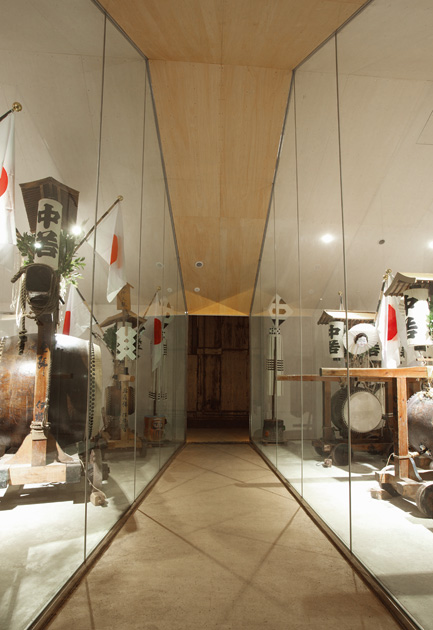
Photo by Tomoki Hirokawa
The area where you live wasn’t as you expected so you decided to change it?
MatsubaSimply put, yes.
What are your plans?
MatsubaArchitectural design and reconstructing Hachioji are two separate things in my mind. I need to make something that can be viewed as a work of an architect. That will then tie in with good outcomes like events related to neighborhood renovation and gain people’s attention. As an architect, I want to create work that can be identified from across the world. I also want to create a web magazine or some kind of media in order to share information. If you hold an event and advertise it through the media, people will gather. I feel this will create more opportunities within Hachioji.
Will you always work in Hachioji?
MatsubaNo. I’ll go to other places besides Hachioji but I want to leave something behind in Hachioji. I have several projects over the next few years which I’ve finally started to uncover so I don’t feel the need to move to the city. I’m sure one day I’ll leave Hachioji behind and establish an office which I can go to directly via the Keio line.
Will you separate your activities between Hachioji and Tokyo?
MatsubaI think so. Most of my construction work will be in central Tokyo, whereas neighborhood related activities such as creating a web magazine or holding events will be in Hachioji. I really want to be in the city!
Do you hope to create something abroad?
MatsubaDefinitely. I’d like to study abroad. Not so much to study but to live in London or New York. That’s all! (laughs) It’s dull doing nothing so I’m thinking of doing architecture. I want to live abroad.
I’d also like to follow-up on creating the creative and cultural facility and working on the brewery. I’ll work on other things as well but those two are things I’d like to continue working on in the future.

Photo by Tomoki Hirokawa
Interview: MODESTE
Tokyo Hachioji Moto-Yokoyama-cho 3-5-4-101
http://www.modeste.info/
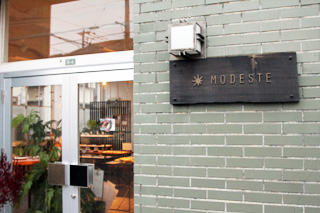
Kunihiko Matsuba Profile
Born in 1979 in Chuo-ku, Tokyo. Graduating from a graduate course in Tokyo National University of Fine Arts and Music, he established TYRANT as a 1st class Kenchikushi license. He is currently the CEO of TYRANT. Hirozakari Sake Brewery , his work of renovating the brewery in Nakanojo-machi, Gunma Prefecture into a creative and cultural facility, received awards from the 11th Yoshinobu Ashihara Award:Merit Award and The International Architecture Awards 2012, as well as JCD Design Award 2011:Rookie Award. Growing interested in an old entertainment district he came upon by chance, he shows support by renovating the local area of Hachioji, Tokyo through the 43 Tamachi Renovation Project.
Website http://www.tyrantkm.com/
